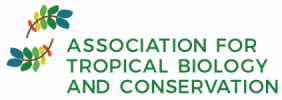Challenges for Restoration and Conservation in the Anthropocene
A joint webinar sponsored by the Society for Ecological Restoration and the ATBC
Wednesday, September 12, 2018 10:00 AM EST

Illustration from Sobral M. et al., (2017)
Behind biodiversity loss what we are losing are keys interaction that modulates ecosystems. Therefore, restoration and conservation must have a complete view of the ecosystems to guaranty their recovery. In this webinar we will explore how biotic interactions can influence restoration of natural systems. We will understand how feeding interactions, such as predation and frugivory, affect the carbon cycle in the soil-atmosphere and in the trees. Besides, we will learn about the how changes in animal composition may induce changes in the spatial organization of tree cohorts and its implication for restoration as a strategy for reviving and sustaining forests. Finally, we will explore how changes in animal composition (pollinators and disperser) can be partially reversible if we develop functional ecosystem restoration strategies.
We hope you join us and enjoy this webinar!
How to attend?
Please register for "BIOTIC INTERACTIONS IN THE TROPICS: Challenges for restoration and conservation in the Anthropocene" on September 12, 2018 10:00 AM EST at:
https://register.gotowebinar.com/register/9004776321694638851
After registering, you will receive a confirmation email containing information about joining the webinar.
Webinar topics and presenters:
Mammal diversity influences the carbon cycle through trophic interactions in the Amazon.
Mar Sobral
Department of Biology, Stanford University, Stanford, CA, 94305, USA
Center of Functional and Evolutionary Ecology, CNRS, Montpellier, 34293, France
Department of Zoology, Universidade de Santiago de Compostela, Santiago de Compostela, 15782, Spain
While it is known that the efficiency of carbon capture and biomass production by ecological communities increases with species diversity, the role of vertebrate animals in the carbon cycle remains undocumented. We show that mammal and tree species richness is positively related to tree biomass and carbon concentration in soil—and the relationship is mediated by vertebrate feeding events. We highly the idea that whole community complexity—including vertebrate richness and trophic interactions—drives ecosystem function in tropical systems.
Defaunation increases the spatial clustering of lowland Western Amazonian tree communities.
Robert Bagchi
Department of Ecology and Evolutionary Biology, University of Connecticut, Storrs, CT, USA
Defaunation increased spatial aggregation of saplings of tree species reliant on hunted dispersers. The increase in sapling clustering did not increase density‐dependent thinning, and persisted into older recruit cohorts, suggesting that hunting may initiate long‐term spatial reorganisation of Amazonian tree communities. The lack of increased density‐dependent thinning indicates that reduced dispersal did not increase mortality of large‐vertebrate dispersed tree species that contribute disproportionately to forest biomass.
Ecosystem restoration strengthens pollination network resilience and function
Christopher N. Kaiser-Bunbury
Ecological Networks, Department of Biology, TU Darmstadt, 64287 Darmstadt, Germany
Restoration of native plant communities is one strategy to mitigate the negative impacts of biodiversity loss, but there is little knowledge on whether restoration has a positive effect on ecosystem functions. In this study, we show that restoration increased the number of pollinator species and native plan productivity. Changes in pollinator behaviour resulted in increased pollination, suggesting that the degradation of ecosystems through the introduction of exotic species is at least partially reversible.
Successional status, seed dispersal mode and overstorey species influence tree regeneration in tropical rain-forest fragments in the Western Ghats, India
Anand M. Osuri
Department of Ecology, Evolution and Environmental Biology, Columbia University.
Anthropogenic disturbances such as forest fragmentation drive marked changes in both abiotic and biotic processes, resulting in altered and often diminished regeneration of forest trees in tropical human-dominated landscapes. Drawing on our scientific research and restoration efforts in India’s Western Ghats mountains, I will explore ideas on: (1) animal seed dispersal and its significance alongside other factors such as shade and soil for natural regeneration and recovery of degraded tropical forests; and (2) the importance and potential limitations of restoration as a strategy for reviving and sustaining forests with old-growth tree species in human-dominated tropical landscapes.
